Image above: copy of a 1572 Ortelius map of the kingdom of Prester John
Image credit: Leeds University Library, Special Collections (Ref: BC MS Lt q 73)
Food and Business
Oxford Brookes University: Special Collections
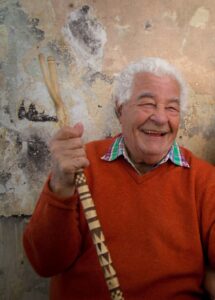
©Fred Harding. Ref: AC
Commendatore Antonio Carluccio (1937-2017), OBE, OMRI, Italian cookery writer, cook and restaurateur
The library and archive of the famous chef has been given on permanent loan to Oxford Brookes University by The Antonio Carluccio Foundation. Carluccio set up the Foundation to alleviate hunger and support the teaching of cooking skills. He shared his philosophy of food, deep knowledge of authentic regional Italian cooking and his passion for foraging and mushrooms through his restaurants, television shows and books. The collection, dating from c.1950-2017, also reflects his creativity beyond the kitchen and contains handwritten manuscripts, proofs and first editions; press cuttings; photographs; artworks; his whittled sticks; the draft for a children’s book; watercolour sketches for a ballet; numerous awards and recordings of television appearances.
Edinburgh University Library, Special Collections
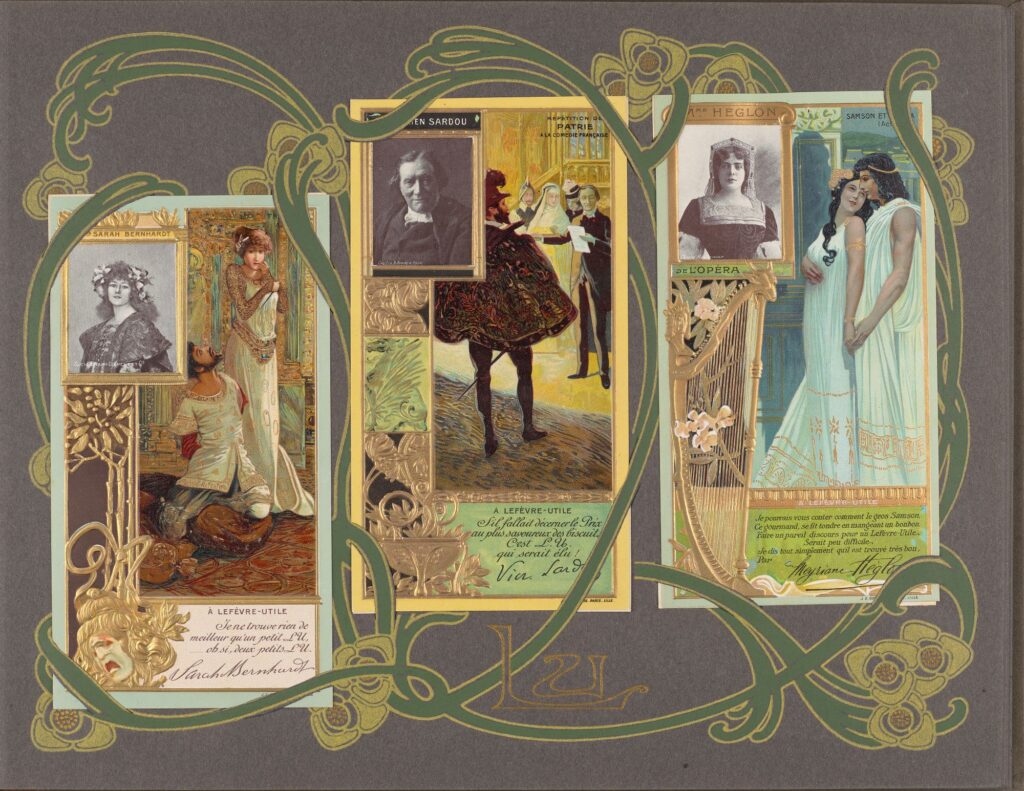
Coll-2042; SC-Acc-2021-0076
LU, biscuit manufacturer, Nantes
The cards in this beautifully decorated album were issued by the French biscuit manufacturer LU (formerly known as Lefèvre-Utile) on its packets of biscuits in 1901 as a publicity stunt. Each of the 48 chromolithographed cards features a contemporary celebrity’s portrait along with a relevant colour image in art-nouveau style and a quotation from the celebrity themselves in praise of LU biscuits.
Cumbria Archive Centre, Carlisle
Carr’s Biscuits, Caldewgate, Carlisle
An addition to the Carr’s Biscuits archive, this accession included a Works’ Advisory Committee, minute book, dating from 1917-1944; an attractive 1914 Biscuit and Cake catalogue and a 13th Annual Report of the Carlisle Poor Children’s Silloth Outing Fund from 1906. Founded in 1831, Carr’s quickly became one of the largest baking businesses in Britain. Today it is owned by Pladis Global with its products distributed worldwide.
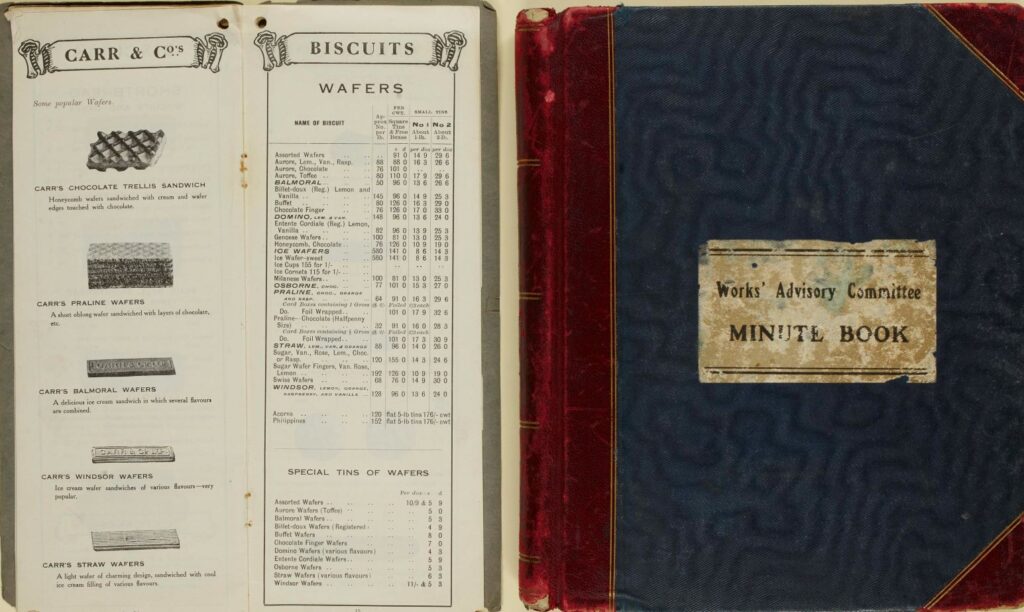
Image © Pladis Group. Ref: DB 45
War and Conflict
National Army Museum Templer Study Centre
The Department of Native Refugee Camps
Original hand-compiled return from Native Refugee Department (O.R.C) from August 1902 covering all 34 camps, including Bloemfontein, Walton and Vredefort Road. At the time of compilation there were over 47,000 ‘refugees’ in the camps and sadly during the month over 150 had died, including 47 children. The return provides fascinating financial details, notes the numbers employed, those rationed and those not, by camp, calculating the net total cost during the month as £1,625-2s-11p. This official folding document is signed three times by or for the Superintendent, Native Refugee Department, and contains detailed and historically important information on the camp system during the Boer War.
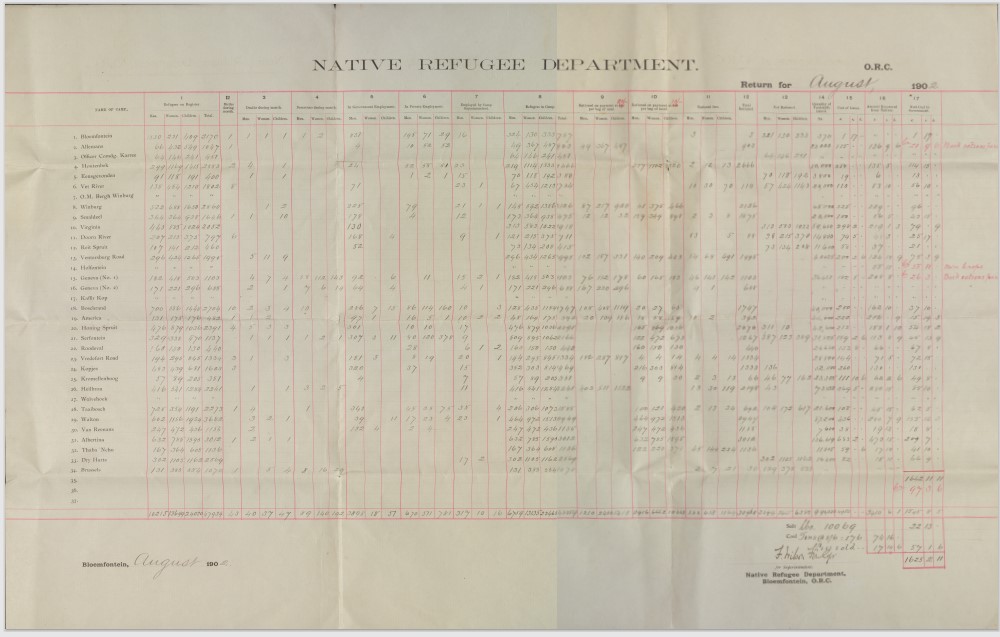
Ref: 2021-01-12
National Library of Wales: Department of Collection Services
Tomás O Donohoe (fl1916), member of the Irish Citizen Army
Medical list for Frongoch south Camp. In September 2021 the Library purchased a small book comprising a ‘Hospital List’ noting the names and prisoner numbers of injured or sick Irish Republican prisoners who were held at the Frongoch camp following the 1916 Easter Rising. The list was compiled by Tomás O Donohoe, a prisoner at the camp who was a member of the Irish Citizen Army. After the surrender he was imprisoned in Knutsford Gaol before being transferred to Frongoch where he worked as hospital orderly. He was later active in the Irish War of Independence, and after the Civil War he was ordained a priest.
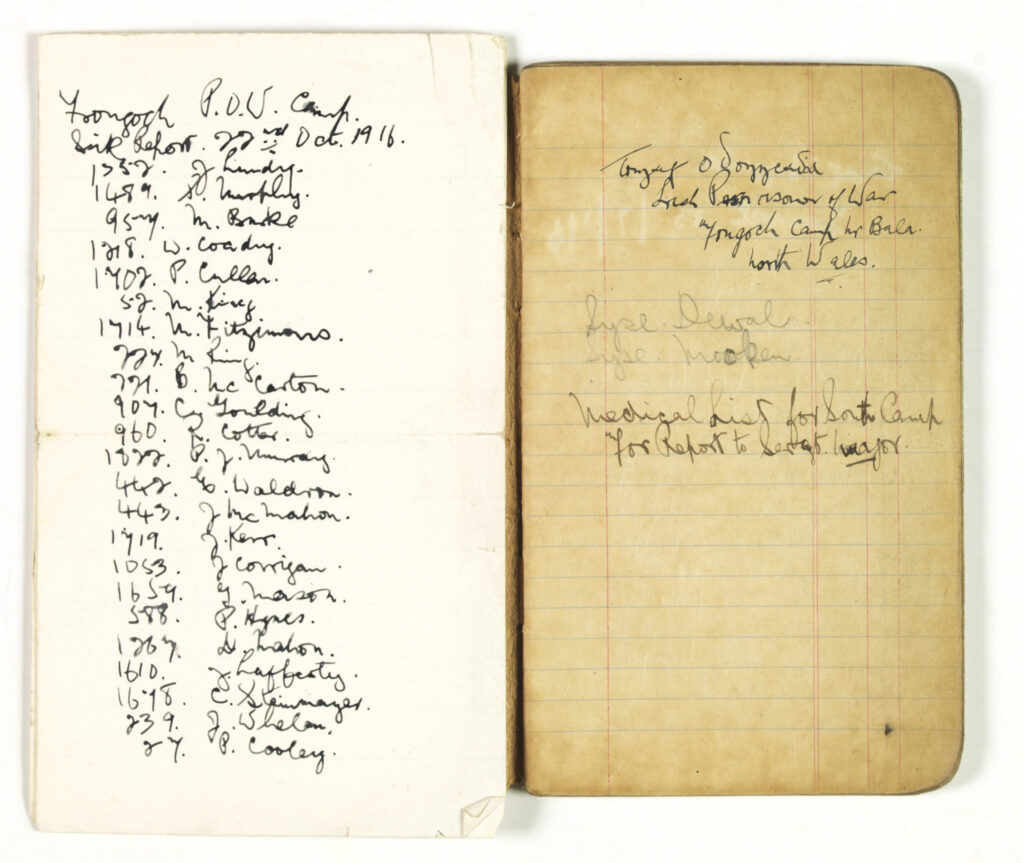
Ref: NLW MS 24185
Island Archives, Guernsey
Frank Falla (1911-1983), author, journalist, former acting editor of ‘The Star’ and assistant editor of the ‘Guernsey Evening Press’ newspapers
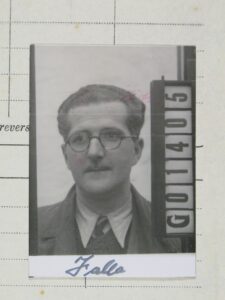 The Island Archives, Guernsey accessioned a set of diaries kept by the late Frank Falla. In 1944 he was imprisoned and deported to Germany for his role in producing the underground newsletter GUNS (Guernsey Underground News Service) that provided news to islanders during the German Occupation (1940-1945). Dr Gilly Carr, Senior Lecturer and Academic Director of Archaeology at the University of Cambridge Institute of Continuing Education and owner of the Frank Falla Archive website, has commented:
The Island Archives, Guernsey accessioned a set of diaries kept by the late Frank Falla. In 1944 he was imprisoned and deported to Germany for his role in producing the underground newsletter GUNS (Guernsey Underground News Service) that provided news to islanders during the German Occupation (1940-1945). Dr Gilly Carr, Senior Lecturer and Academic Director of Archaeology at the University of Cambridge Institute of Continuing Education and owner of the Frank Falla Archive website, has commented:
‘Frank Falla was one of the only known people who kept a diary in Guernsey prison during the occupation. Its survival as a series of ripped out pages hidden in a later diary provided a fascinating insight into the experience of being in a Nazi prison on British soil.’
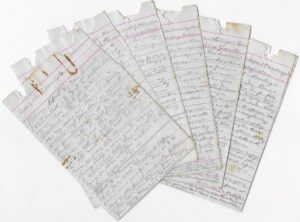
Image credit: Gilly Carr. Ref: AQ 1167/18 to 27
Sickness and Health
Warwick University: Modern Records Centre
Queer/Disrupt, University of Warwick research group
Submissions to the ‘Queering the Quarantine’ project 2020-21; The Queering the Quarantine Project was designed to capture creative queer responses to the pandemic, and to preserve these for future generations as the experiences of queer individuals and community which are often still too hidden and forgotten.
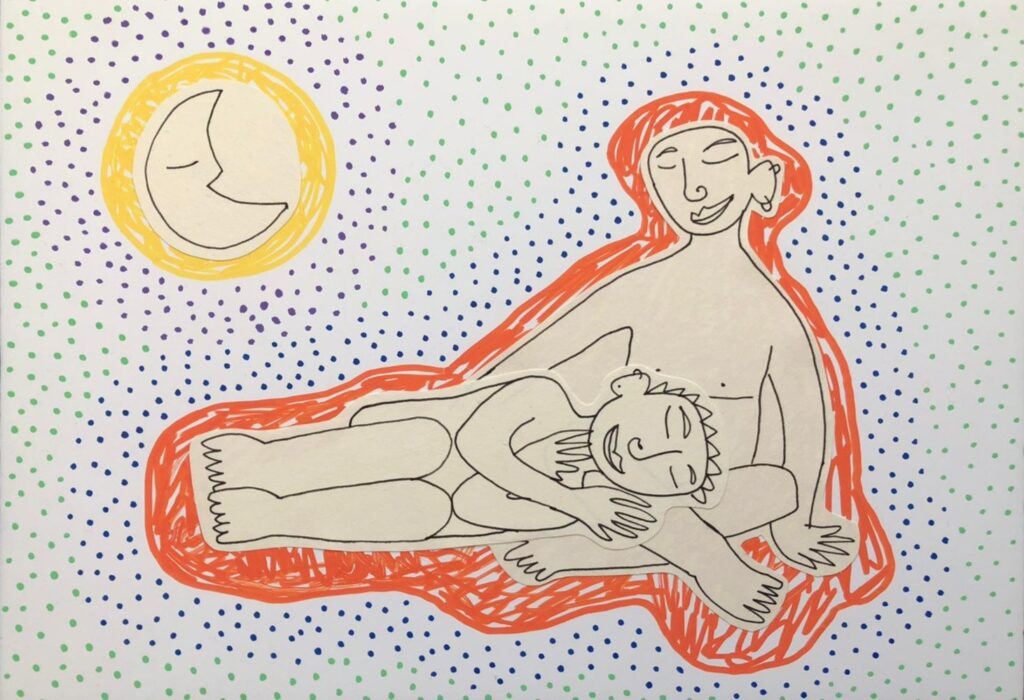
Credit: Seren Thomas. Ref: QTQ
Royal College of Physicians of London
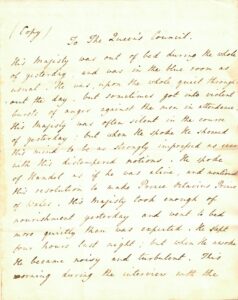
Ref: MS-GEORG/C
Sir John Scott, Lord Eldon (1751-1838), barrister and politician, serving as Lord High Chancellor of Great Britain, 1801-1806 and 1807-1827
These letters are from the physicians of King George III relating to the King’s condition, treatment and daily activities during his periods of illness, in 1801, 1804, and 1811. They are part of a collection of 82 letters kindly donated to the Royal College of Physicians of London by the family of John Scott. As Lord Chancellor, Scott was a key figure in deciding whether the king was fit to carry out his duties. He was also responsible for keeping Parliament updated regarding the king’s health. The letters reveal the jockeying for position among the physicians and politicians, as both groups sought to take advantage of the king’s illness.
Art and Poetry
Seven Stories, the Centre for Children’s Books
Patricia Evelyn Hutchins (1942-2017), illustrator and writer
Collection of artwork and other items representing the entire career of illustrator and writer Pat Hutchins. The collection highlights technological developments in the field of colour reproduction in the 1960s which revolutionised and extended the scope of the picture book as a medium for communicating ideas. Pat Hutchins, like many of her contemporaries, exploited and explored the possibilities for picture book-making that these developments opened up, in particular, the ‘ingenious juxtaposition’ between picture and words where illustration now moved beyond its traditional role of representing and interpreting text to sharing the storytelling equally with it.
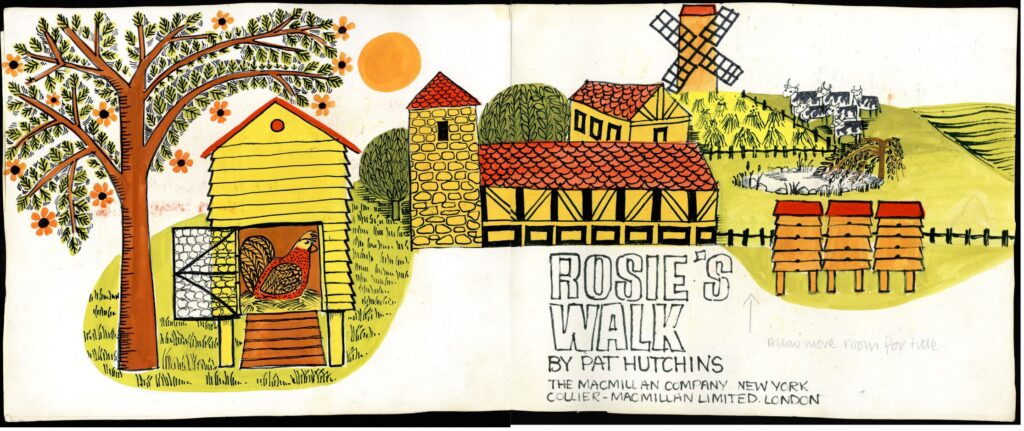
Ref: CR5144
Warwickshire County Record Office
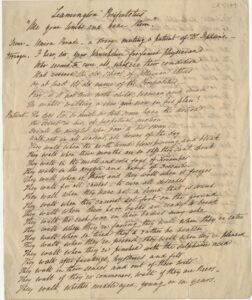
Ref: CR5144
Charlotte Elliott (1789-1871), poet and hymn writer
This was a manuscript of satirical verses satirising the activities of Dr Jephson of Leamington, c.1842. Elliott acquired a certain amount of fame in the Victorian era as a hymn writer. She suffered bouts of ill health and, like so many, visited Leamington Spa where she came under the care of Dr Henry Jephson, in 1841. The verse later published as an illustrated broadside was less than complementary about the experience, particularly the regime of walking whilst the doctor is seen driving everywhere in his carriage.
‘We’ll drive, whether ponies, cobs, highbreds or hacks
We’ll drive above all things, we’ll drive away – Quacks!’
Leeds University Library, Special Collections
Ralph Knevet (1600-1671), tutor to the family of Sir William Paston of Oxnead Hall, chaplain and poet
Drafts of five handwritten devotional poems ‘Prayer’, ‘Sicknes’, ‘The world’, ‘Preaching’ and ‘Memory’. The poems are written on the reverse of a double-page Ortelius hand-coloured engraved map of Africa and the Arabian Peninsula, showing the Kingdom of Prester John, published in 1572. Abraham Ortelius (1527-1598), was a cartographer, geographer, and cosmographer. He is widely credited as the creator of the first modern atlas. These five poems would later be published in ‘A Gallery to the Temple: Lyrical Poems Upon Sacred Occasions’ (ed. Goliardica, 1954). The use of the reverse of a coloured Ortelius map for poetic composition is unusual, though other examples exist. This suggests that Knevet may have drafted his entire series of devotional poems on the blank leaves of an atlas.
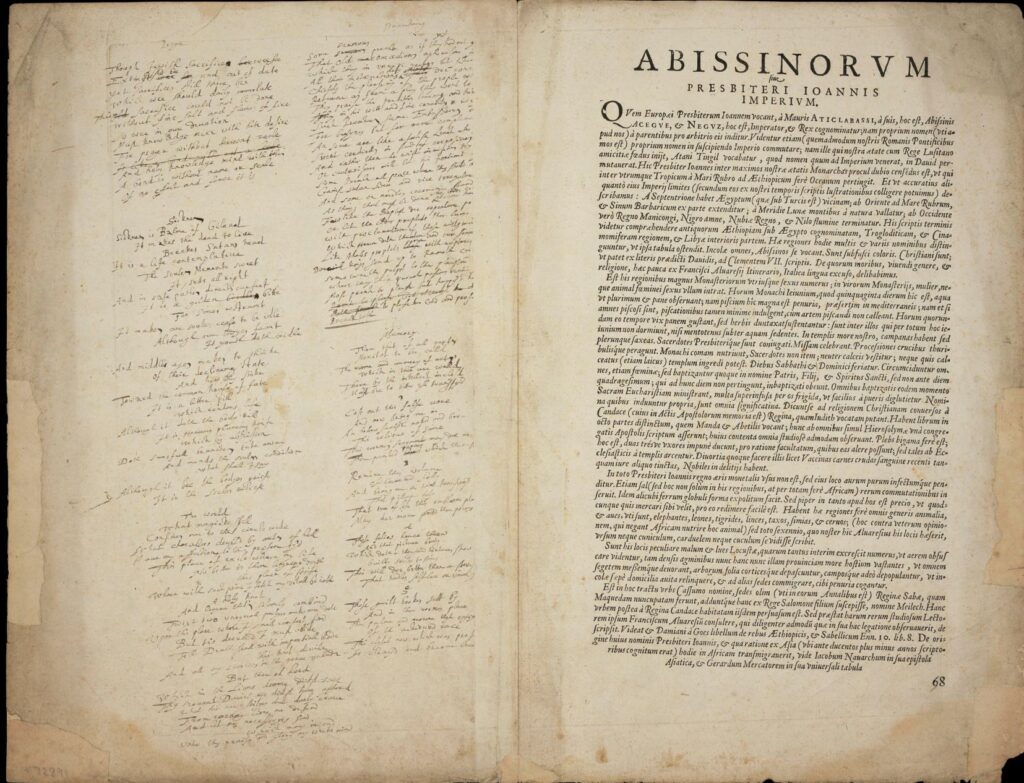
Ref: BC MS Lt q 73
Science and Technology
Science and Industry Museum
Virustatic Ltd, biotech company
The archive provides context for the development and production of the Virustatic Shield, a fabric snood face covering with an anti-viral protein coating which traps and disables certain viruses. The snood was invented by Paul Hope, an engineer from Manchester. Early research was undertaken in collaboration with the University of Manchester under Professor Sabine Flitsch. Hope was inspired to begin work on developing the snood and protein technology after the SARS epidemic in 2010. His grandfather Robert had died of Spanish Flu in 1919 and Hope believed that another flu pandemic was inevitable. After 10 years of development and seeing COVID-19 starting to spread across the world, Virustatic pushed through the final stages of development to bring the snood to market in March 2020, in the hope that the protein would prove effective against respiratory viruses other than flu. The archive also includes reports into the science behind the snood technology.
Ref: 2021-1653
National Science and Media Museum
Collection of early experimental ambrotypes
These are all early experimental ambrotypes by an unknown photographer. They are thought by the previous owner to have been made by Frederick Scott Archer (1813-1857), photographer and sculptor, in the 1850s.

Ref: 2021-1560 to 2021-1572